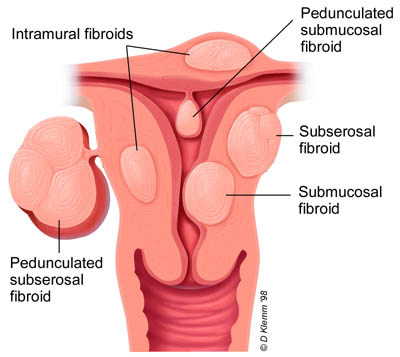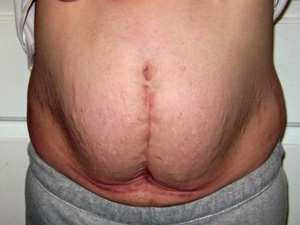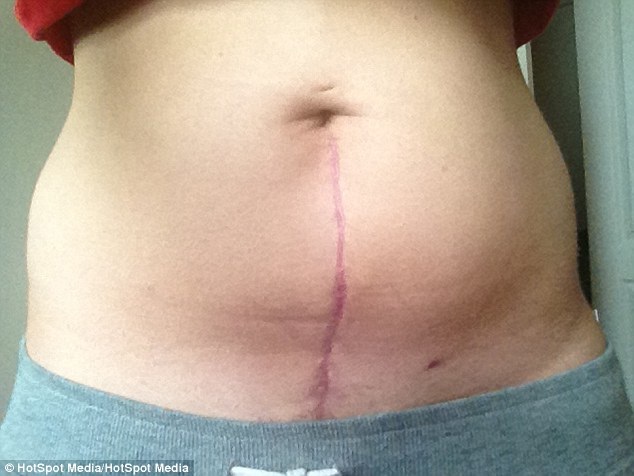|
|

In this diagram, you can see that a fibroid is classified depending on it's location in the uterus. If it is on the surface it is called subserosal. If it is in the muscle it is called intramural. And if it abuts or protrudes into the endometrial cavity it is called submucosal. It is common to have multiple fibroids.
Fibroid location is important when it comes to deciding if UFE is right for you; we will determine the location of your fibroids with an MRI imaging exam
Fibroid location is important when it comes to deciding if UFE is right for you; we will determine the location of your fibroids with an MRI imaging exam
The UFE procedure blocks the blood supply to the fibroids. The fibroid tumors are hypervascular meaning they use more blood than normal tissue, stealing the blood away from adjacent structures. The abnormal arteries supplying the fibroids are larger than the arteries supplying the normal tissue of the uterus. The particles we inject during UFE are sized to tumble into the abnormal large fibroid arteries while sparing the tiny vessels that feed the uterus. Deprived of their blood supply, the fibroids die and shrivel into small scars that cease to give you any problems.
Walk me through the procedure
The Interventional Radiologists of STRG perform this procedure. Feel free to contact us directly or allow your family physician, nurse practitioner, internist, or gynecologist to contact us. Make sure to ask your doctor about this alternative! Even though UFE has been around for over 25 years, many physicians are unfamiliar with it and are therefore reluctant to bring it up (they may not be able to answer any questions about it). That's OK, just tell your doctor you want to see me and I will answer your questions. And remember, you can make the appointment without a referral (unless your insurance plan insists on one; we can tell you if that is the case).
Walk me through the procedure
The Interventional Radiologists of STRG perform this procedure. Feel free to contact us directly or allow your family physician, nurse practitioner, internist, or gynecologist to contact us. Make sure to ask your doctor about this alternative! Even though UFE has been around for over 25 years, many physicians are unfamiliar with it and are therefore reluctant to bring it up (they may not be able to answer any questions about it). That's OK, just tell your doctor you want to see me and I will answer your questions. And remember, you can make the appointment without a referral (unless your insurance plan insists on one; we can tell you if that is the case).
What you can expect at your clinic appointment: The clinic appointment is a critical step in your treatment. Here we will meet, I will ask you some questions and you will ask me questions. It can help your visit go smoothly if you complete these forms prior to your arrival.
I will perform a focused physical exam during our encounter, which I typically limit to listening to your heart, lungs, and abdomen, pressing on your abdomen to assess the size of your uterus and check for tenderness, and checking the pulses in both of your legs. If you have a specific concern about another area I will exam that as well, but a pelvic exam is not necessary. The pelvic exam can be skipped because I need to review an MRI of your pelvis to know if it makes sense to perform the UFE. The MRI also happens to give me the information I would have obtained from the traditional pelvic exam.
When you make your appointment, we will schedule the MRI for you so you will have had it before we meet. If you want to see what your MRI looks like I am happy to review it with you. If you would rather wait and have the MRI after we meet, that is OK but it removes the opportunity for us to look at the study together.
By the end of our encounter I will have determined if UFE is appropriate for you and you should have your questions about UFE answered. If you are a candidate and decide you want to have the procedure you simply call us again at 210-616-7780 to schedule your UFE (or if you want I will have my staff call you, so you can avoid the inevitable hold).
I will perform a focused physical exam during our encounter, which I typically limit to listening to your heart, lungs, and abdomen, pressing on your abdomen to assess the size of your uterus and check for tenderness, and checking the pulses in both of your legs. If you have a specific concern about another area I will exam that as well, but a pelvic exam is not necessary. The pelvic exam can be skipped because I need to review an MRI of your pelvis to know if it makes sense to perform the UFE. The MRI also happens to give me the information I would have obtained from the traditional pelvic exam.
When you make your appointment, we will schedule the MRI for you so you will have had it before we meet. If you want to see what your MRI looks like I am happy to review it with you. If you would rather wait and have the MRI after we meet, that is OK but it removes the opportunity for us to look at the study together.
By the end of our encounter I will have determined if UFE is appropriate for you and you should have your questions about UFE answered. If you are a candidate and decide you want to have the procedure you simply call us again at 210-616-7780 to schedule your UFE (or if you want I will have my staff call you, so you can avoid the inevitable hold).




